The Intel Core i3-7350K (60W) Review: Almost a Core i7-2600K
by Ian Cutress on February 3, 2017 8:00 AM ESTTotal War: Attila
The Total War franchise moves on to Attila, another The Creative Assembly development, and is a stand-alone strategy title set in 395AD where the main story line lets the gamer take control of the leader of the Huns in order to conquer parts of the world. Graphically the game can render hundreds/thousands of units on screen at once, all with their individual actions and can put some of the big cards to task.
For low end graphics, we test at 720p with performance settings, recording the average frame rate. With mid and high range graphics, we test at 1080p with the quality setting. In both circumstances, unlimited video memory is enabled and the in-game scripted benchmark is used.
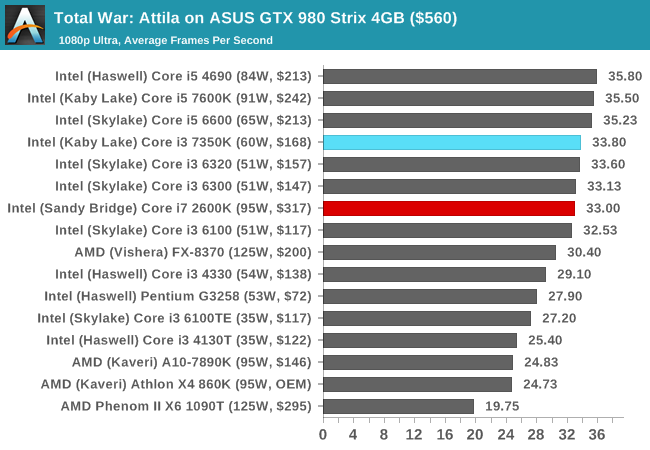
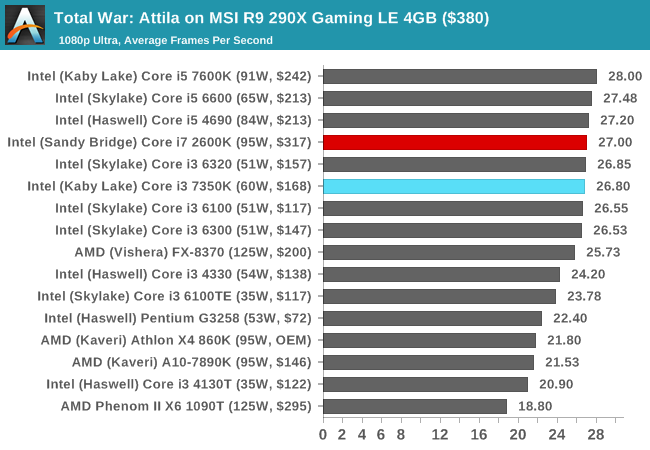
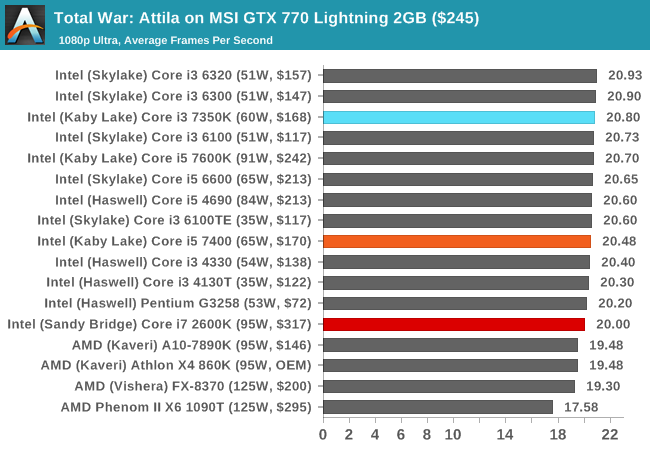
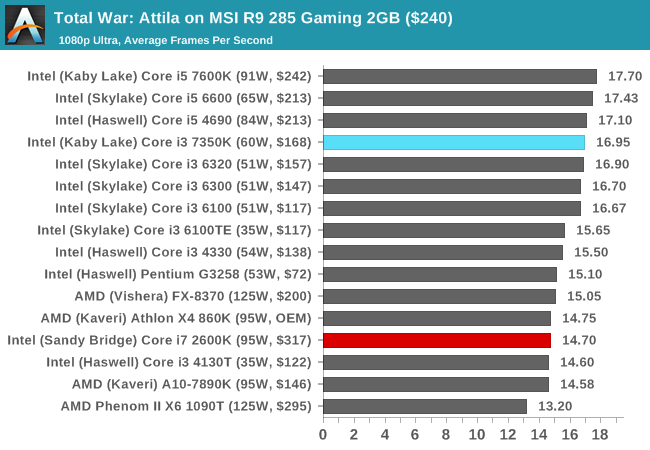
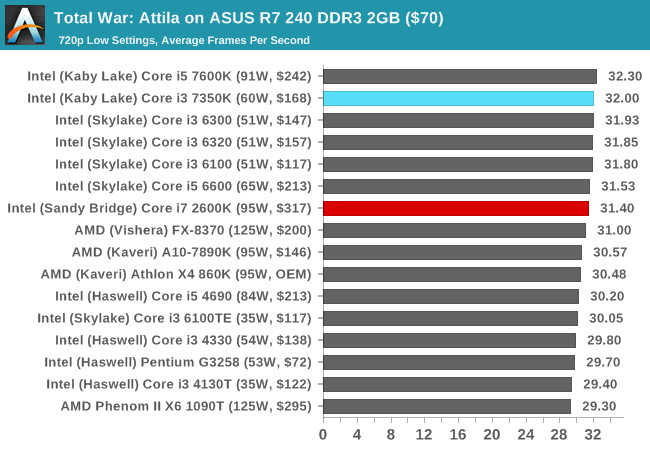
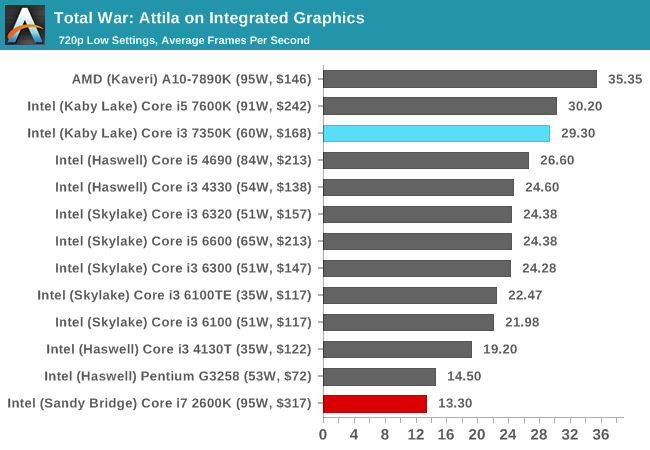
Similar to Alien Isolation, the only discrete GPU there seems to be much of a difference between the i3 and i7 is on the R9 285, where the newer microarchitecture has the advantage. The integrated graphics in Sandy Bridge were laughable, and the Core i3 offers over double the performance here.











186 Comments
View All Comments
cknobman - Friday, February 3, 2017 - link
I definitely think they should have at least included those results.fanofanand - Friday, February 3, 2017 - link
Some people purchase a "K" processor for the binning, not to overclock it.JackNSally - Friday, February 3, 2017 - link
Ok. So exclude those that buy it to overclock?fanofanand - Sunday, February 5, 2017 - link
I was responding to the comment saying the only reason to get a k was to overclock.WithoutWeakness - Friday, February 3, 2017 - link
Absolutely should have included overclocking. Sandy Bridge chips had very conservative stock clocks and great overclocking potential. At the time you were almost guaranteed 4.4GHz-4.7GHz on air and and there were lucky users reaching 4.8-5GHz (and more under water). My 2600K has been running stable at 4.6GHz (a 35% overclock) for six years now at 1.35v. Those single-threaded charts would look much different if you included overclocks and the multi-threaded charts would seriously widen the gap.I'm glad Intel has opened the gates for overclocking i3's but this review really just shows how small Intel's gains have been in the last six years. I'm hoping Ryzen brings some serious performance to the table (especially at the high end) and lights a fire under Intel's asses. Better iGPUs and lower power consumption are great for laptops and and basic users's needs but there has been no innovation in the HEDT market for many years unless you're willing to shell out $1700 for the 10-core Extreme Edition.
CaedenV - Friday, February 3, 2017 - link
Yep! Sandy Bridge was/is good tech!I got the non-K i7 Sandy Bridge, and even that overclocked easy to 4.2GHz. It was an artificial limit, but I didn't need to spend the $50 premium to get a potential 3-500MHz out of it. Been humming along for 6 years now and hasn't missed a beat!
At this rate I will probably be 'upgrading' my game rig to a tiny little i3, and recycling my i7 as a home server for storage and VMs.
eldakka - Sunday, February 5, 2017 - link
"(and more under water)"Shocking.
dragosmp - Friday, February 3, 2017 - link
Agreed, Ian might have posted them. Still, read between the lines: there is a statement the 2600K does 4.8-5GHz. At 20% higher clock speed, the 2600K destroys the OCed i3 7350K, no contest. It may consume 4x the power, but dunno, do you care when the GPU consumes 5x more anyway?CaedenV - Friday, February 3, 2017 - link
Ya, not too useful on the gaming charts as even the non-K chips kept up with the GPUs just fine. But getting to see what it does for productivity tasks would be interesting.Actually, stock vs OC i3, i5, i7, and i7 Sandy would be very interesting to me.
dave_the_nerd - Friday, February 3, 2017 - link
Too much individual variation. Non-overclocked performance is the guarantee. Everything else is up to chance in the silicon lottery.Also potential for abuse: say, the manufacturer sends reviewers some golden sample that hits 5.1GHz on air. Hah! GPU makers used to pull stunts like that.